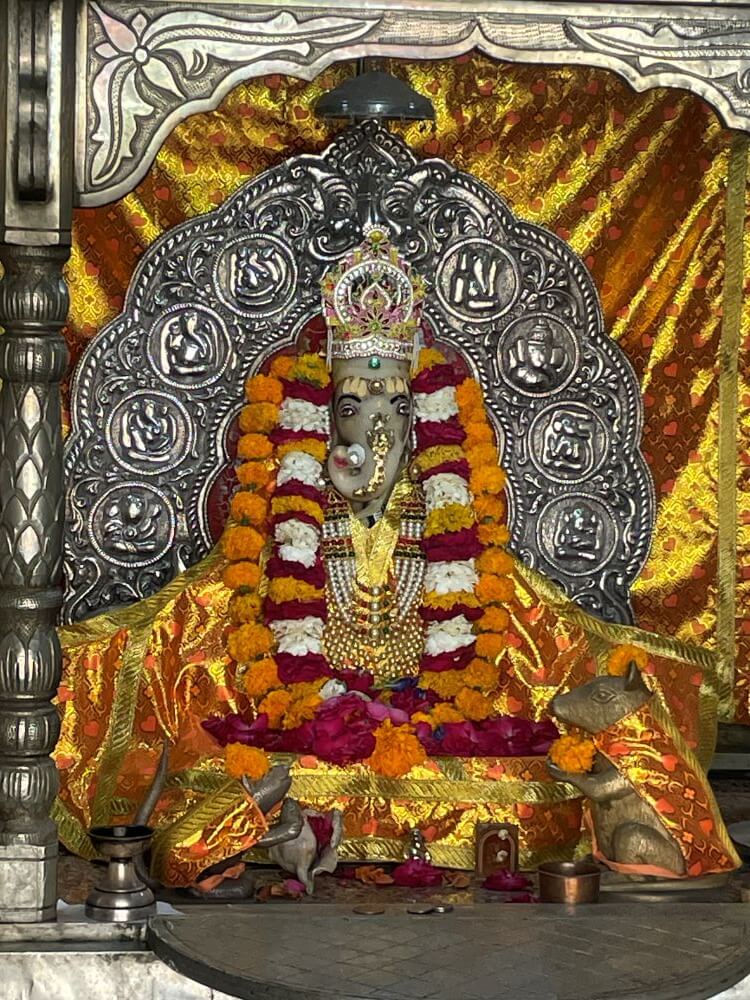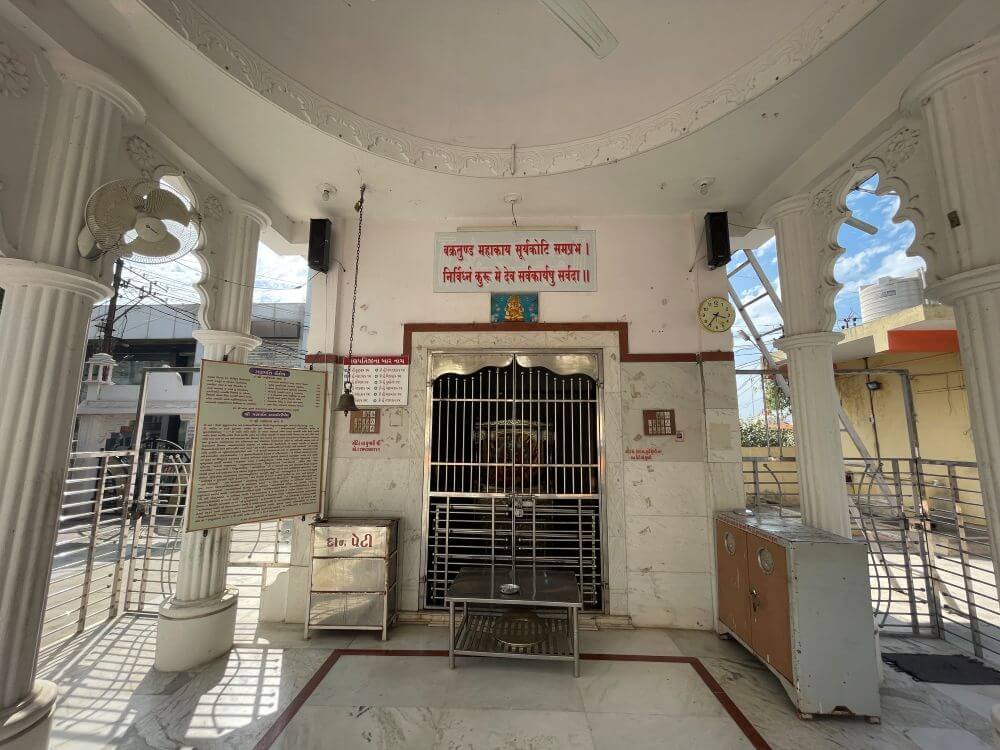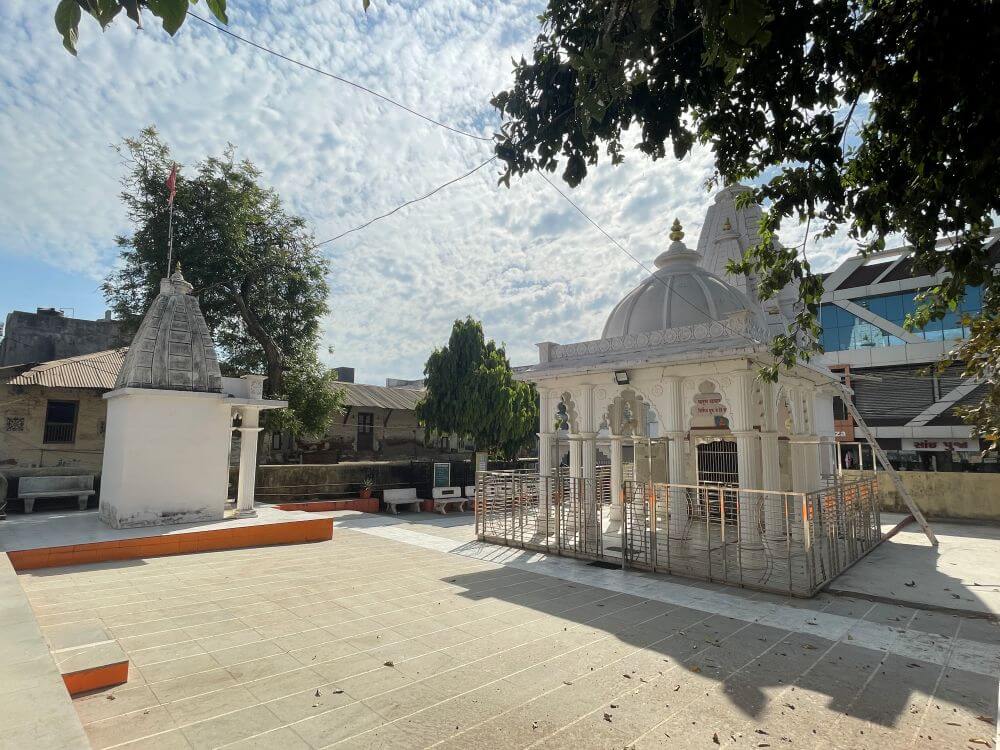
The renowned Siddhivinayak Sarvajanik Temple in Dabhoi was built during the Gaekwad rule of Baroda. A distinctive feature of this Ganesh temple is that it is one of the few temples in Gujarat where Lord Ganesha has a right-turning trunk, which is considered especially sacred and rare. It is believed that the idol was consecrated by a Marathi family and devotees have immense faith that the Siddhivinayak here is spiritually awakened and fulfills all wishes. During festivals, 56 types of delicacies are offered to the deity as part of the naivedya.
Historically, Dabhoi was known by names such as Darbhavati, Darbhikagram and Darbhavatipura. The 6th-century astronomical text ‘Romaka Siddhanta’ mentions this city. It is also referenced in Jain texts like Hemchandra’s ‘Yogartrevritti’ and Ramchandra’s ‘Vikramcharitra’. The city was initially under the Chavda dynasty, followed by the Chalukyas and later came under the Vaghela rule in the 13th century. The town has fortified walls with ornately carved gates. A significant historical event here was the battle on April 1, 1731, witnessed by the Dabhoi fort, where Peshwa Bajirao fought a key battle against the combined forces of Senapati Trimbakrao Dabhade, Pilaji Gaekwad, Pawar and the Nizam. During Mughal rule, Dabhoi was a district headquarters, later governed by the Gaekwads of Baroda.
 This ancient temple is located near Lal Bazaar on Motibaug Road in Dabhoi. About 250 years ago, during the Gaekwad regime, a Marathi family ceremoniously installed a marble idol of right-trunked Ganesh here. The temple took on its current form after renovation in 2014.
This ancient temple is located near Lal Bazaar on Motibaug Road in Dabhoi. About 250 years ago, during the Gaekwad regime, a Marathi family ceremoniously installed a marble idol of right-trunked Ganesh here. The temple took on its current form after renovation in 2014.
The temple is set within a spacious courtyard. In the courtyard, on the trunk of a tree, is a Swayambhu (self-manifested) Ganesh, alongside two marble shrines of Dattatreya and Goddess Amba. The main Siddhivinayak temple is built entirely with marble stone. It comprises an open assembly hall (Sabhamandap) and a sanctum (Garbhagriha). The Sabhamandap has circular pillars with decorative arches and a domed ceiling, while the sanctum has a Nagar architectural style Urushringa spire.  Steel railings have been built around the Sabhamandap.
Steel railings have been built around the Sabhamandap.
Inside the sanctum, Lord Ganesha with a right trunk is seated on a beautifully carved silver throne. Below the throne are carvings of swastikas, lotus flowers, floral motifs and elephants. The halo (prabhavali) behind the idol features carvings of the Ashtavinayak. The seated Ganesh idol holds a lotus, noose, water pot (kamandalu) and laddu. Around his belly is a serpent, he wears pearl garlands and on his head is a silver crown and umbrella. A silver mouse sits beside the idol.
While it is commonly believed that right-trunked Ganesh idols are strict and require special purity, noted astrologer D. K. Soman has stated that Lord Ganesh is never harsh; rather, he is gracious and forgiving. The Siddhivinayak of Dabhoi is similarly known for being compassionate and wish-fulfilling. Thus, devotees from various parts of Gujarat and Maharashtra come for darshan. Daily worship and rituals are performed here.
On Tuesdays, Chaturthi, Angaraki Chaturthi, during Bhadrapad Ganeshotsav and Maghi Ganesh Jayanti, large numbers of devotees gather. On Angaraki Chaturthi, devotees queue from the evening, with darshan continuing until midnight. Ganesh festivals in Bhadrapad and Magh are celebrated enthusiastically. During these times, the temple is illuminated beautifully and the idol is decorated with flowers.



